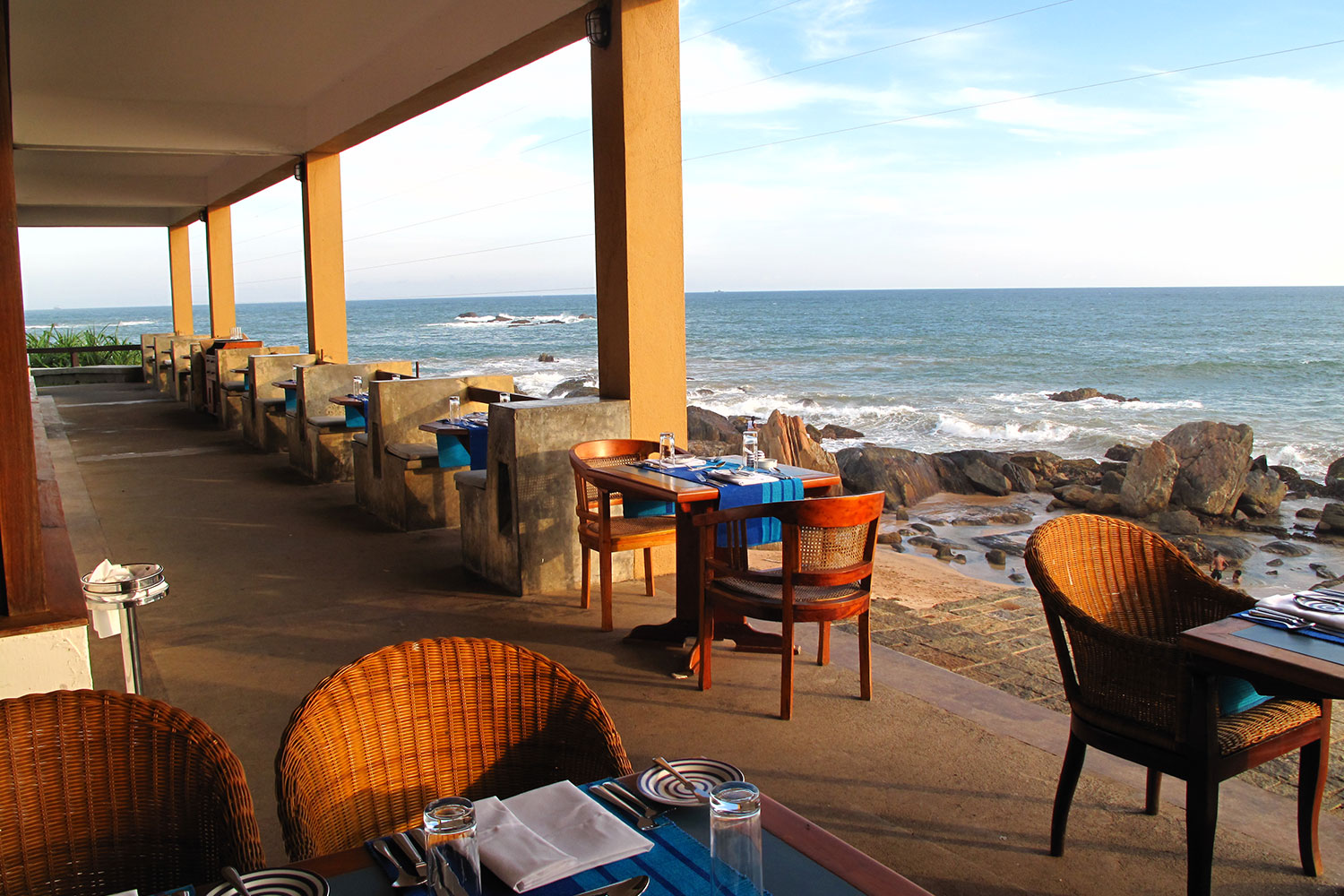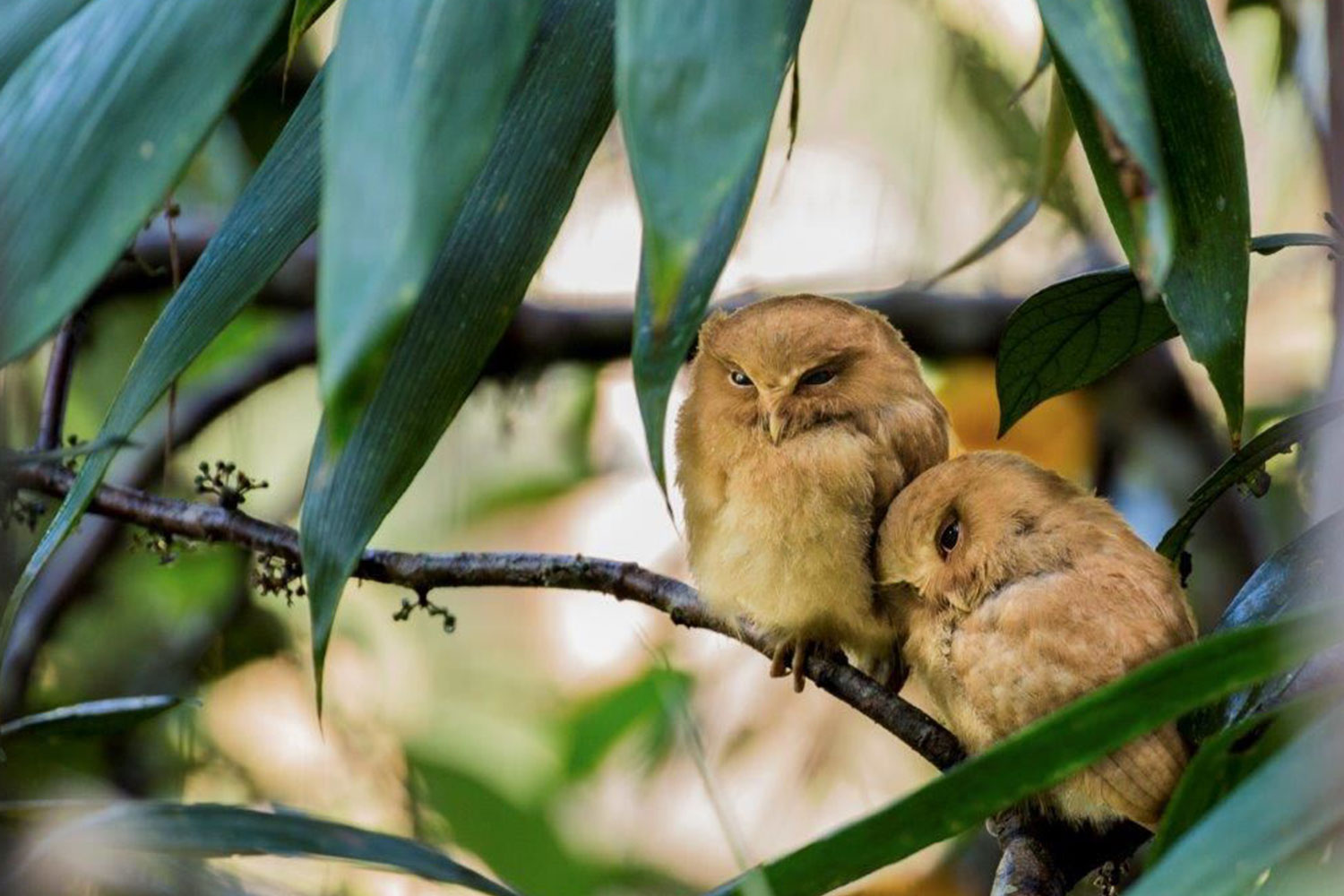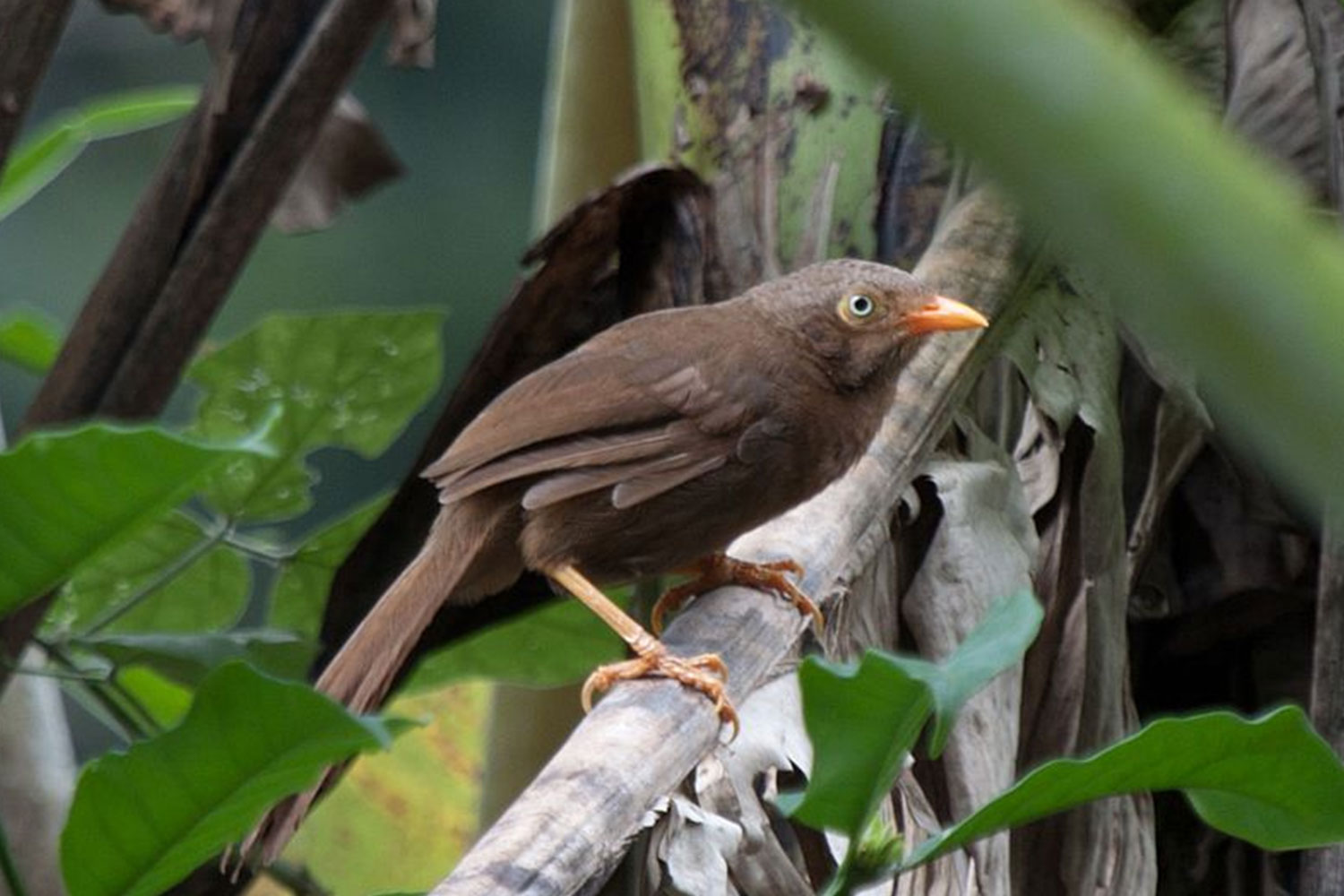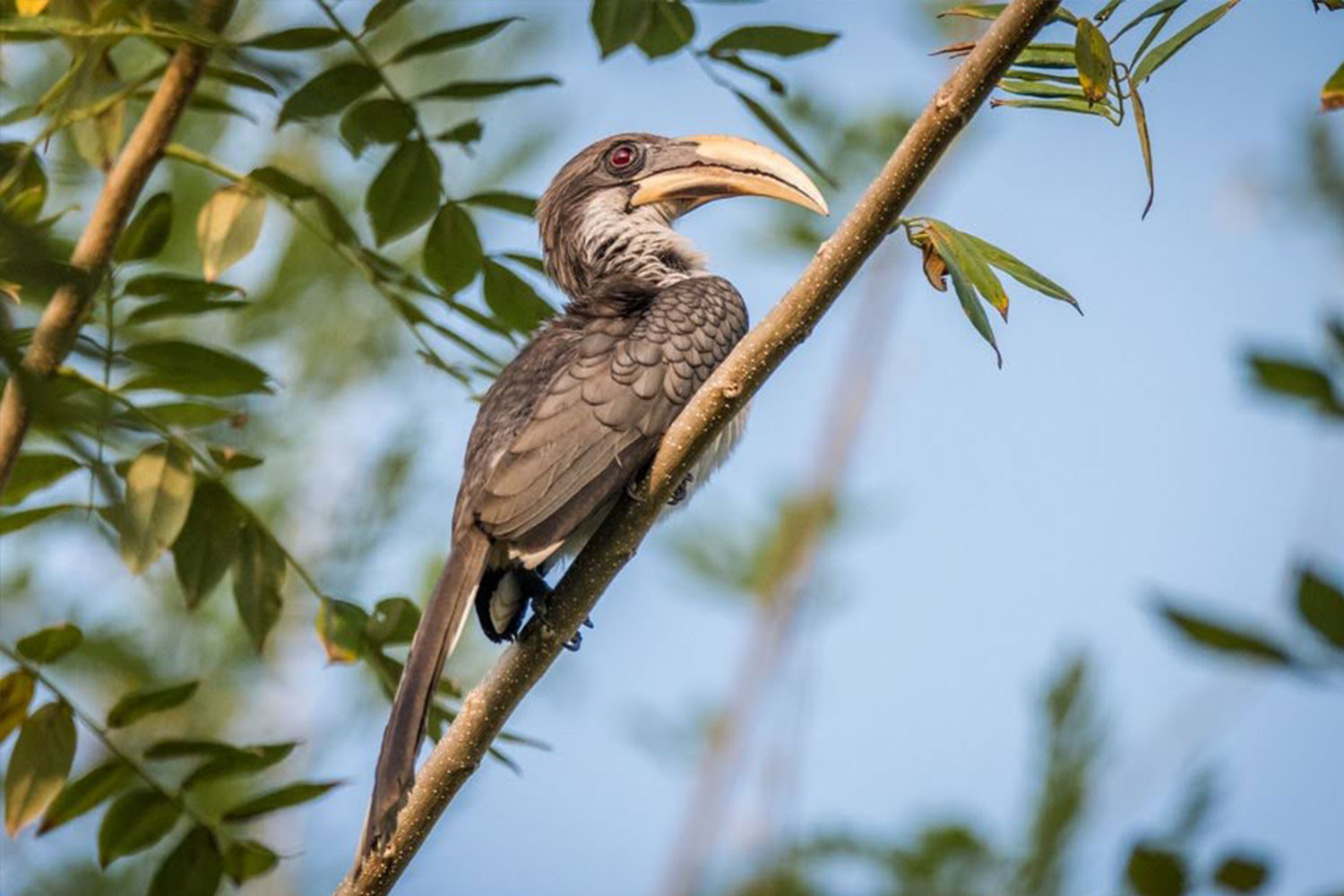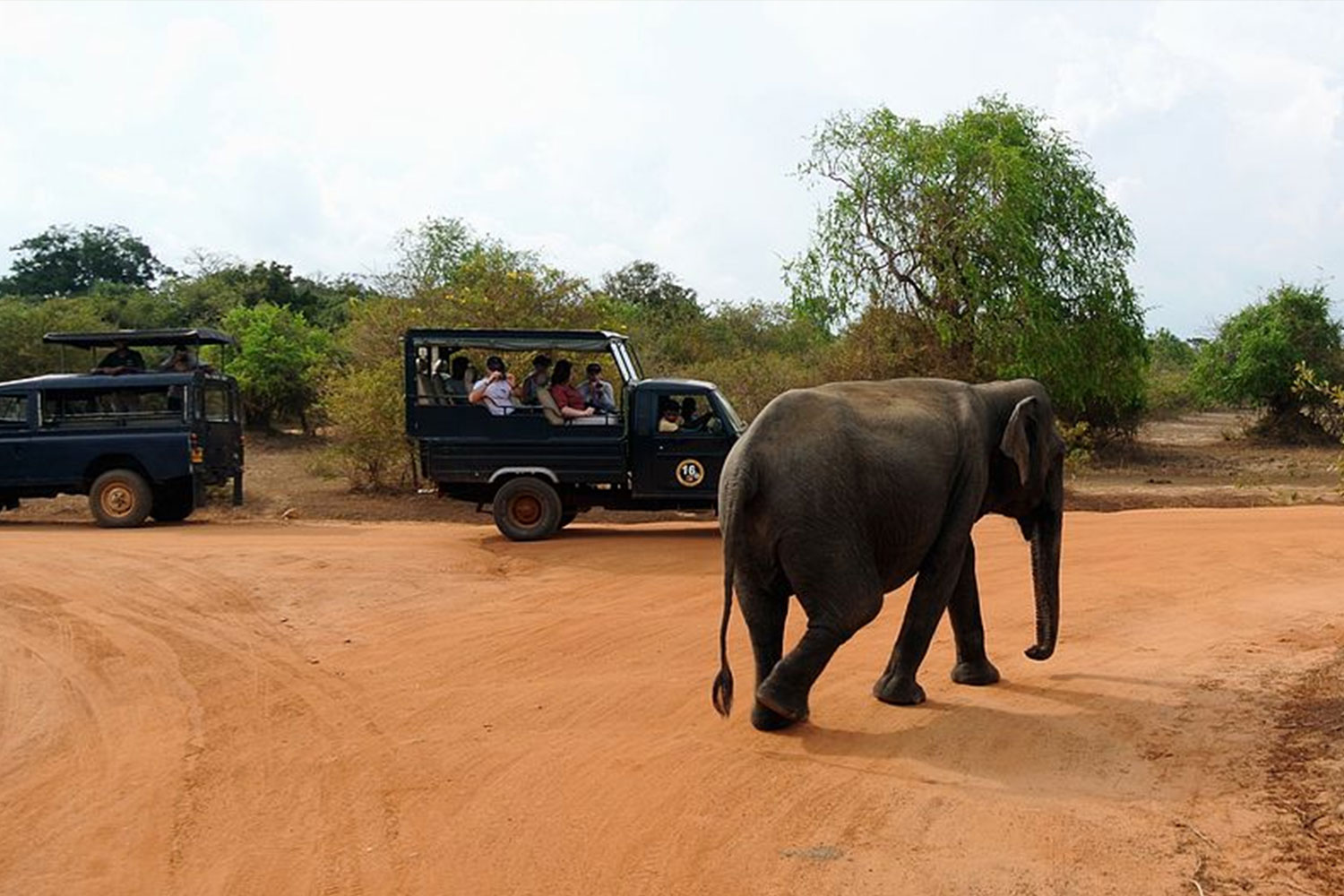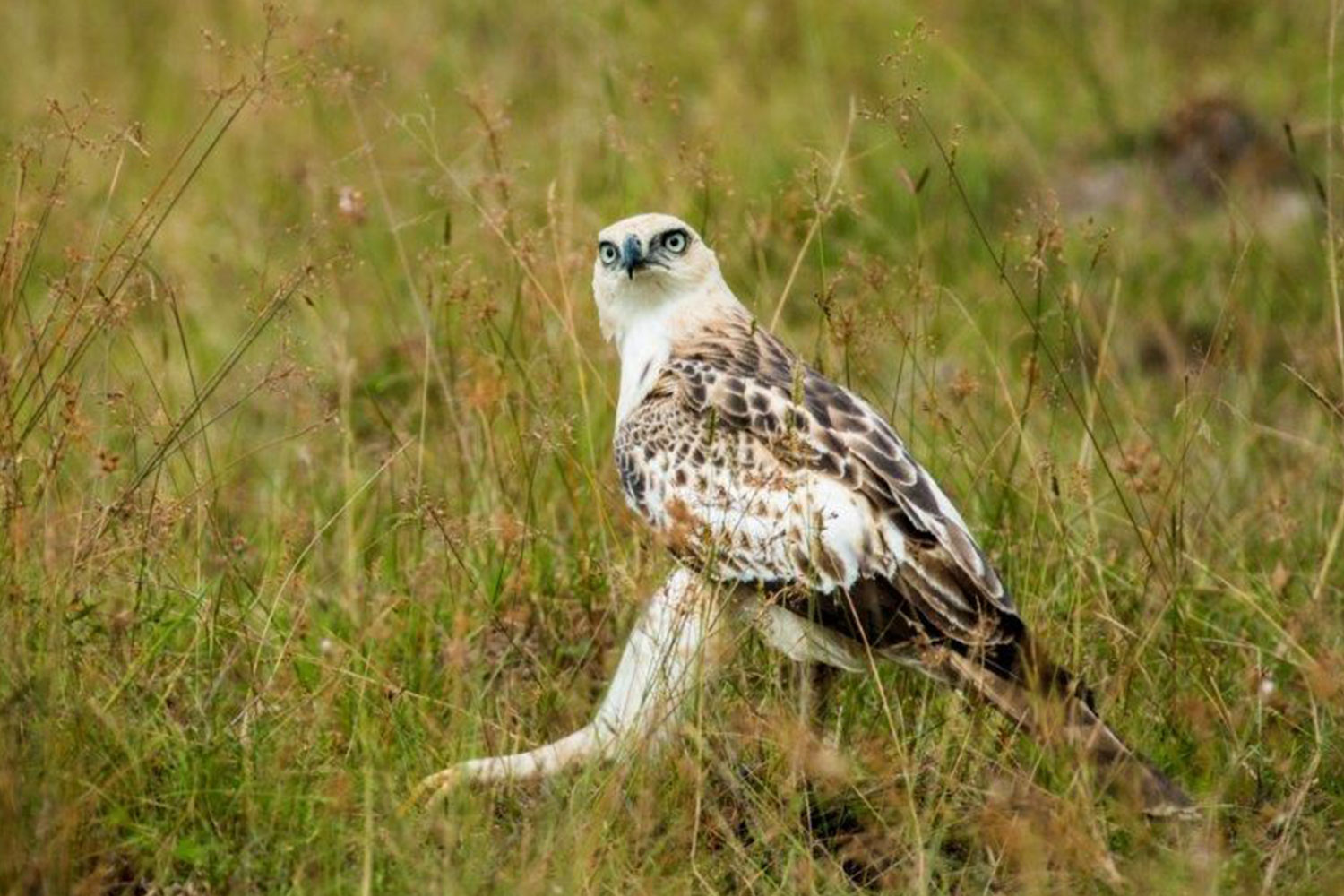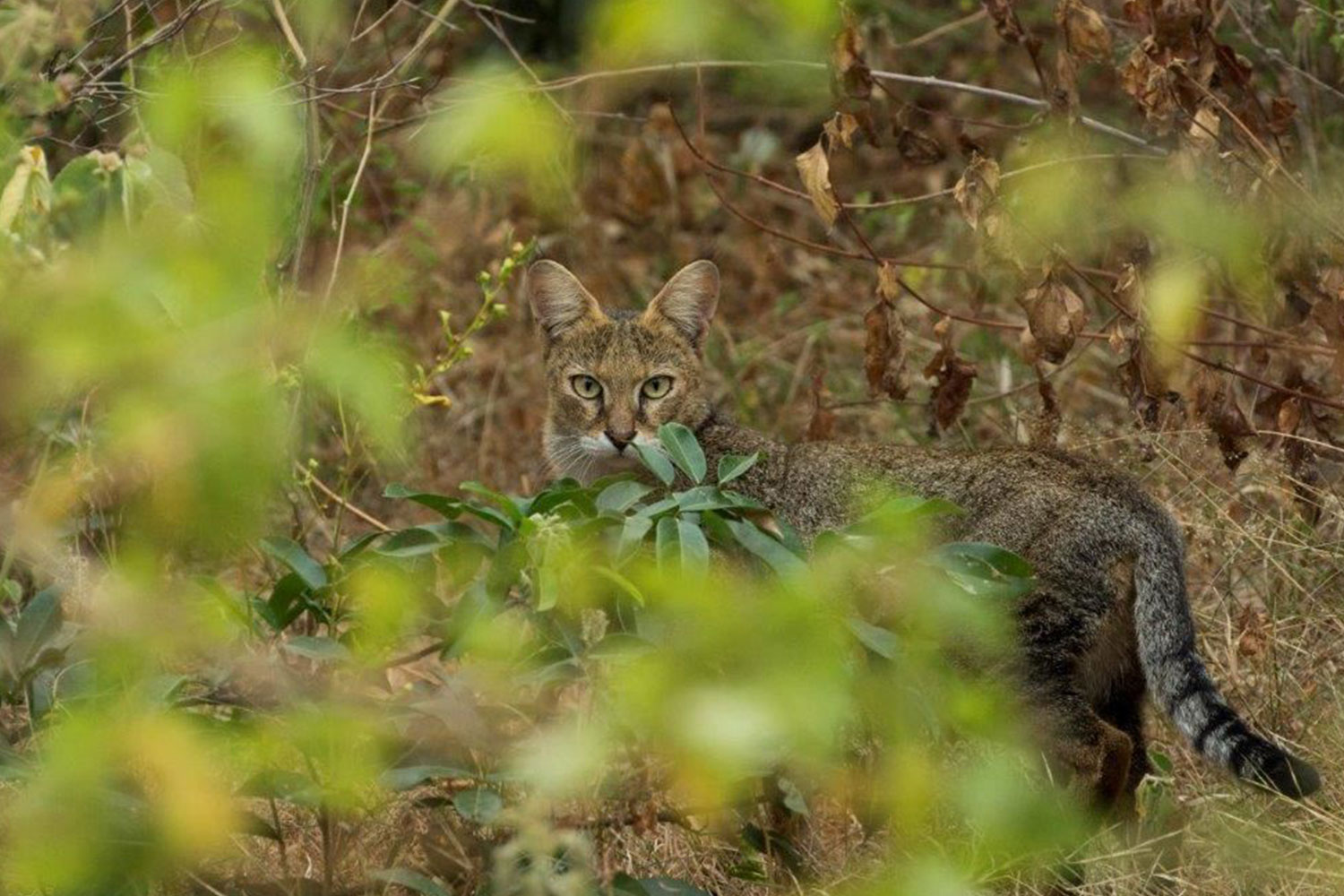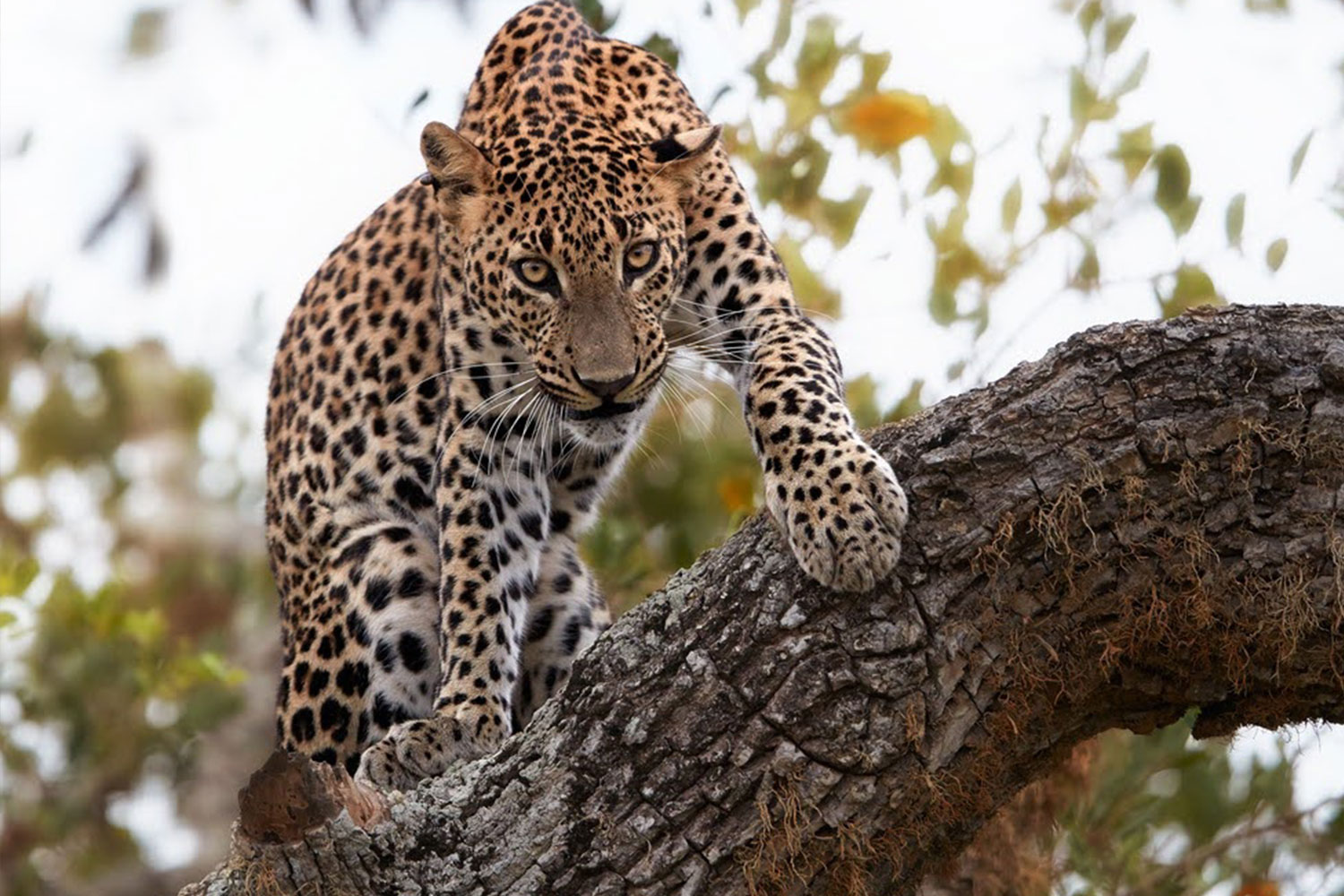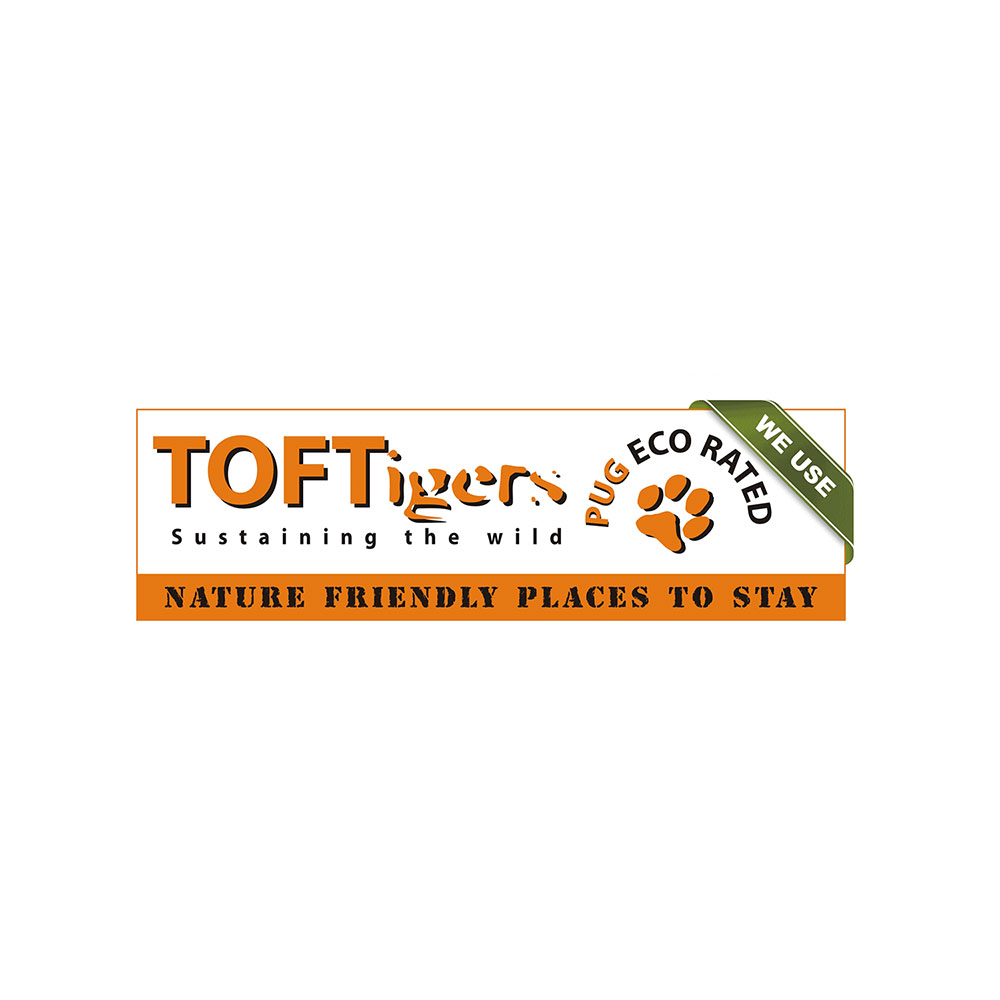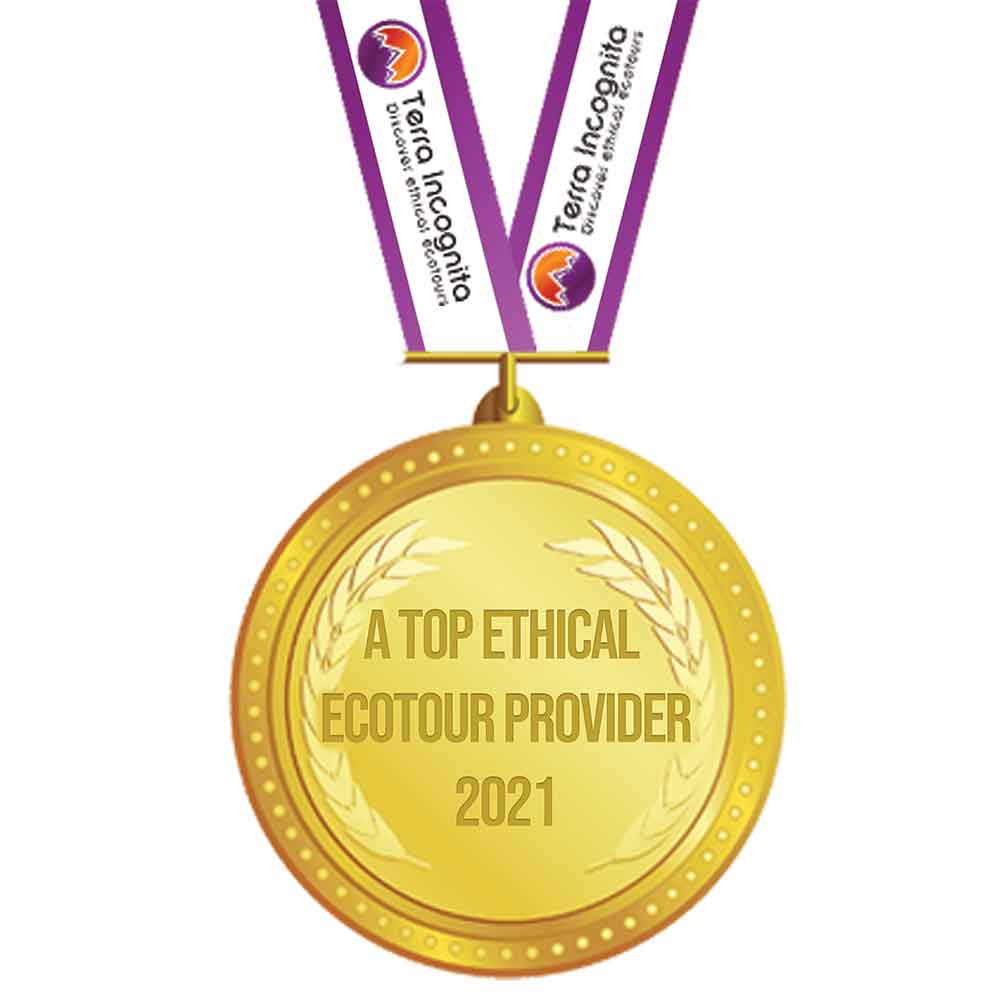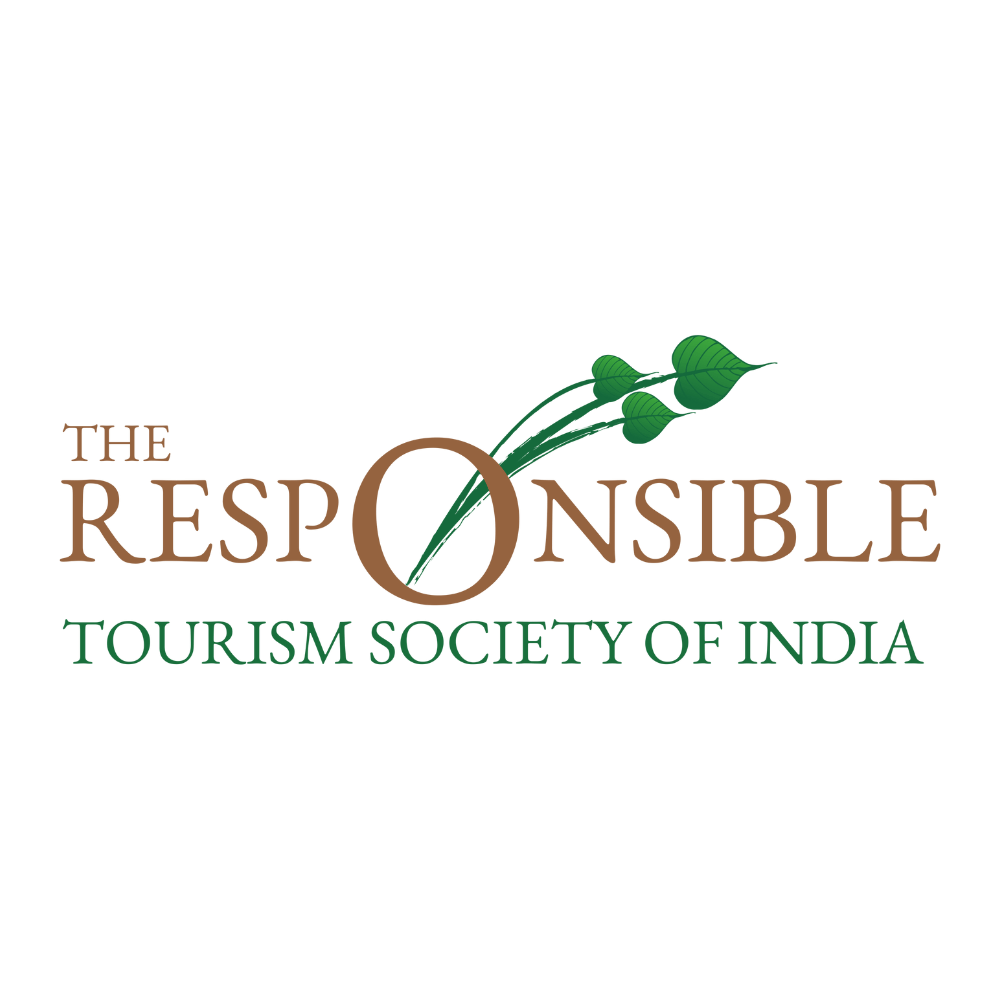Overview
The emerald isle of Sri Lanka is a treasure trove of wildlife. Lying in the Western Ghats-Sri Lanka biodiversity hotspot, the island nation is home to many endemic bird and mammal species, as well as the world’s best whale-watching destinations.
The ten nights and eleven days tour unveils the prolific wildlife of Sri Lanka. The journey will kickstart in Negombo followed by a two-night stay in Kitulgala, two nights stay in Nuwara Eliya, one night stay in Udawalawe, one night stay in Yala, and a three-night stay in Sinharaja. The trip is rendered with amazing trails and safaris making you see rare and endemic species of birds and mammals including Sri Lanka grey hornbill, Sri Lanka Spurfowl, Sri Lanka whistling thrush, Western Osprey, Jungle Cat, Asian Elephant, Malabar Trogon, etc. Led by a team of expert naturalists and ground handlers we will ensure the tour leaves a lasting memory in your mind loaded with a great photo album.
The Lament of Sri Lanka
Many think I’m always jealous of my big sister, India. And to a point that’s true. Yes, she is much bigger than me, and more famous. But I do pack plenty of punch for my size, especially when it comes to wildlife.
Like my sister, I am home to many birds and animals, and like her I have plenty of endemic birds, like the Sri Lanka Hanging Parrot, Serendib Scops Owl, Sri Lanka Grey Hornbill, Crimson-throated Barbet, and more, calling me Mother. I am also home to the world’s largest leopards, and the gentle giants of land and ocean: the Asiatic Elephant and the Blue Whale.
And yet, so many people favor visiting India over me. I know I’ve often been maligned in mythology, but did you know that King Solomon himself was said to be drawn to my wildlife? I’ve been home to countless kingdoms, and am still home to a great Buddhist culture. Did you also know that I’m home to what is considered to be the oldest human-planted tree?
So why don’t you visit sometime? I’ll be waiting.

Meals: Full Board Basis (Lunch, Dinner, and Breakfast)
Accommodation: Goldi Sands or similar
Room Category: Standard Room
Upon arrival at Bandaranaike International Airport, you will be met by our representative and transferred to your hotel in Negombo. Check into your hotel and spend the rest of the day at leisure.
Overnight stay.

Meals: Full Board Basis (Lunch, Dinner, and Breakfast)
Accommodation: The Plantation Hotel or similar
Room Category: Standard Room
After breakfast, leave Negombo heading toward the west to our first birding base, the lush lowlands of Kitulgala (3 hours drive). Roadside birding in Sri Lanka is refreshingly good. Blue-tailed Bee-eater, White-throated Kingfisher, White-bellied Drongo, Indian Roller, Sri Lanka Swallow, Scaly-breasted Munia, Brown Shrike, Indian Jungle Crow, Yellow-billed Babbler, Oriental Magpie-Robin, and Ashy Woodswallow are often seen perched on wires. Though we will no doubt see them again and again, these wayside temptations will be hard to resist. The odd Crested Serpent Eagle and Changeable Hawk-Eagle, sentinels on posts, will almost certainly bring our vehicle to a halt. The more common waterbirds such as Red-wattled Lapwing, Indian Pond Heron, Eastern Cattle Egret, Intermediate Egret, Black-winged Stilt, and Asian Openbill will certainly not be ignored either. With all these leg-stretching stops it will be close to midday by the time we reach our overnight accommodation, The Plantation Hotel nestled in a well-wooded garden and overlooking the Kelani River, the setting for the renowned ’50s Hollywood blockbuster “The Bridge on the River Kwai”. After enjoying our first of many rice-and-curry lunches we will commence our quest for the island’s endemics in the well-wooded garden of our lodge. The resonant call of Yellow-fronted Barbet is likely to demand our attention first – a common element in the soundscape of the wet Sri Lankan hinterland. The gregarious Orange-billed Babbler with its constant chattering will be easier to locate. A gem of a bird, Sri Lanka Hanging Parrot may require scope views to properly take in its scarlet forehead and rump patch against a greener body.
Our night bird tally is likely to get ticking with the adorable Chestnut-backed Owlet at a stakeout. The well-wooded, home-garden-type birding, combining several “patches”, will add a mouth-watering array of birds to our tally in the form of newly raised endemic Sri Lanka Swallow (perched views on wires), Sri Lanka Green Pigeon, Chestnut-headed Bee-eater, Square-tailed Bulbul, White-browed Bulbul, Yellow-browed Bulbul, Tickell’s Blue Flycatcher, Orange-billed Babbler, Sri Lanka Grey Hornbill, Golden-fronted Leafbird, Red-backed Flameback, Black-headed Cuckooshrike, Sri Lanka Hill Myna, Common Iora, Purple-rumped Sunbird, Bar-winged Flycatcher-shrike, Orange Minivet, Brown-breasted Flycatcher, Asian Brown Flycatcher, Forest Wagtail, and perhaps Layard’s Parakeet, named after E. L. Layard, a 19th-century British civil servant, who added an astonishing 136 species to Sri Lanka’s avian inventory.

Meals: Full Board Basis (Lunch, Dinner, and Breakfast)
Accommodation: The Plantation Hotel or similar
Room Category: Standard Room
Full day birding in Kitulgala for lowland endemics and specialties
The Spot-winged Thrush may greet the new day with its rhythmic dawn chorus. And it may perhaps come hopping in to find an easy meal at first light. The “pretty-dear” call, likely to be heard in the undergrowth, may betray a flock of Brown-capped Babbler, moving low. The Himalayan delight, Indian Pitta, might also be not too far if you can well. With more light of the day, the dawn chorus may peak with additional tunes of Green Warbler, Large-billed Leaf Warbler, Tickell’s Blue Flycatcher, and the aforementioned thrush, with harsher greetings from Chestnut-backed Owlet. Our morning’s birding will add a huge boost to our trip list, with the likes of Oriental Dwarf Kingfisher, Sri Lanka Drongo, Lesser Yellownape, Indian Paradise Flycatcher, Black-naped Monarch, Black-capped Bulbul, Indian White-eye, and Sri Lanka Grey Hornbill. We will cross the Kelani River in search of rare gems. Foremost among these is the Serendib Scops Owl, discovered in 2001 and with an estimated population of only 200 – 250 birds in the wild. We will look for it at a daytime roost. The ultra-secretive Sri Lanka Spurfowl may require patience, as it is highly wary of people! Crimson-backed Flameback is also in this forest and is a gorgeous woodpecker. During the return journey, we will pause at a forest patch to look for a roosting pair of Sri Lanka Frogmouth, which is a South India and Sri Lanka endemic.

Meals: Full Board Basis (Lunch, Dinner, and Breakfast)
Accommodation: Galway Heights or similar
Room Category: Deluxe Room
After some early morning birding and breakfast, we will commence our ascent to reach the cooler interiors of Nuwara Eliya (1,890m) (6 hours drive). We will stop for any ‘good’ birds noted along the way, but principally the morning is for driving today. Nuwara Eliya is the most famous hill station in Sri Lanka, named by some “Little England”, as it still bears evidence of its colonial past with its English-style holiday homes, a racecourse, vegetable gardens, shooting ranges, an urban park, a few pubs, flower gardens, and a fine 18-hole golf course.
As we ascend vast stretches of tea gardens dominate the landscape, a cash crop introduced by the British, which is currently the country’s third-highest revenue earner.
Reach your lodging Galway Heights for lunch.
A serious drop in temperature (around 10-15 degrees Centigrade) at Nuwara Eliya will necessitate sweaters! After lunch explore Victoria Park. Established in 1897 to commemorate the 60th coronation jubilee of Queen Victoria, this urban park is the prime location for Western Himalayan migrants, including Kashmir Flycatcher and Pied Thrush, which winter almost exclusively in Sri Lanka. Indian Pitta, Indian Blue Robin, Forest Wagtail, Sri Lanka Scimitar Babbler, Indian Blackbird, and Sykes’s Warbler are some of the other good birds to be found in this park.
Finally, we will reach our highland lodging Galway Heights, for dinner and overnight stay.

Meals: Full Board Basis (Lunch, Dinner, and Breakfast)
Accommodation: Galway Heights or similar
Room Category: Deluxe Room
We will have an early start with a picnic breakfast to get to the high elevation Horton Plains National Park, where we will spend time in the forest looking for high-value montane targets: Sri Lanka Whistling Thrush, Sri Lanka Bush Warbler, Yellow-eared Bulbul, Dull-blue Flycatcher, Sri Lanka White-eye, and Sri Lanka Wood Pigeon. Mixed-species bird flocks are to be found in this forest, comprising both white-eye species, Orange Minivet, Velvet-fronted Nuthatch, Grey-headed Canary-flycatcher, and Bar-winged Flycatcher-shrike.
In the afternoon we will descend back to near Nuwara Eliya, where we will reach a patch of habitat in time to anticipate the arrival of the ultra-secretive, montane endemic, Sri Lanka Whistling Thrush, which is one of two Endangered (IUCN) Sri Lankan endemics. The further remainder of the daylight hours will be spent on covering any species which you would have missed in the surrounding outskirts of Nuwara Eliya.
Return to your hotel for Dinner and overnight stay.

Meals: Full Board Basis (Lunch, Dinner, and Breakfast)
Accommodation: Chandrika Hotel or similar
Room Category: Deluxe Room
Check out early morning with a packed breakfast and head down to Yala National Park.
Check into your hotel.
In the afternoon, head towards the Tissa and Deberawewa wetlands. These are great for many species of waterbirds such as Black, Yellow, and Cinnamon Bitterns, Watercock, Great Stone-curlew, Indian Stone-curlew, Eurasian Curlew, Marsh Sandpiper, Wood Sandpiper, Green Sandpiper, Lesser Sand Plover, Greater Sand Plover, Little Ringed Plover, Little Stint, Kentish Plover, Red-necked Phalarope, Small Pratincole, Western Reef Heron, Striated Heron, Little Egret, Black-headed Ibis, Glossy Ibis, Eurasian Spoonbill, Black-necked Stork, Little Cormorant, Indian Cormorant, Oriental Darter, Spot-billed Pelican, Yellow-wattled Lapwing, Black-tailed Godwit, Garganey, Northern Pintail, Northern Shoveler, Caspian Tern, White-winged Tern, Whiskered Tern, Common Tern, Greater Crested Tern, Lesser Crested Tern, Little Tern, Brown-headed Gull, and Greater Flamingo. Other species possible in the area may include Clamorous Reed Warbler, Eurasian Hoopoe, Ashy-crowned Sparrow-Lark, Brown Fish Owl, Yellow-crowned Woodpecker, and Ashy Drongo.
Also, a local village contact will take you to their village gardens, which have confirmed roosting sites of Jungle Owlet, Oriental Scops Owl, and Brown Fish Owl.

Meals: Full Board Basis (Lunch, Dinner, and Breakfast)
Accommodation: Chandrika Hotel or similar
Room Category: Deluxe Room
An early morning hops on a safari jeep and heads towards Bundala National Park with a packed breakfast (1 hour from the hotel). We will spend the morning birding the fascinating habitats of Bundala National Park, Sri Lanka’s first Ramsar site. This is the premier site for waterbirds, and you can often get close to the birds in the vehicles to get very good photographic opportunities. We will get there as early as possible to maximize our time in this wonderful set of habitats. Some of the species possible here include Black, Yellow, and Cinnamon Bitterns, Watercock, Great Stone-curlew, Indian Stone-curlew, Eurasian Curlew, Marsh Sandpiper, Wood Sandpiper, Green Sandpiper, Lesser Sand Plover, Greater Sand Plover, Little Ringed Plover, Little Stint, Kentish Plover, Red-necked Phalarope, Small Pratincole, Western Reef Heron, Striated Heron, Little Egret, Black-headed Ibis, Glossy Ibis, Eurasian Spoonbill, Black-necked Stork, Little Cormorant, Indian Cormorant, Oriental Darter, Spot-billed Pelican, Yellow-wattled Lapwing, Black-tailed Godwit, Garganey, Northern Pintail, Northern Shoveler, Caspian Tern, White-winged Tern, Whiskered Tern, Common Tern, Greater Crested Tern, Lesser Crested Tern, Little Tern, Brown-headed Gull, and Greater Flamingo. Other species possible in the area may include Clamorous Reed Warbler, Eurasian Hoopoe, Ashy-crowned Sparrow-Lark, Brown Fish Owl, Yellow-crowned Woodpecker, and Ashy Drongo. Further species we will look for include Barred Buttonquail, Painted Stork, White-bellied Sea Eagle, Grey-headed Fish Eagle, Greater Painted-snipe, Common Ringed Plover, Broad-billed Sandpiper, Curlew Sandpiper, Ruff, Terek Sandpiper, Orange-breasted Green Pigeon, Grey-bellied Cuckoo, Blue-faced Malkoha, Sirkeer Malkoha, Chestnut-headed Bee-eater, Indian Pitta, Forest Wagtail, Oriental Skylark, Yellow-eyed Babbler, Rosy Starling, Streaked and Baya Weavers, and Indian Silverbill. There really is a huge list of potential species here, and we’re bound to have a great time.
In the afternoon, head to Yala National Park (1-hour drive), en-route a packed lunch will be given to you. Head into Yala National Park for a game drive where the main focus is to find the apex predator of the Sri Lankan wilds, the Leopard, as well as glimpses of the elusive Sloth Bear, Asian Elephant, Wild Boar, Axis Deer, and many other faunas. Here we will also likely come across some of the birds found at Bundala.
Return back to your hotel for Dinner and overnight stay.

Meals: Full Board Basis (Lunch, Dinner, and Breakfast)
Accommodation: Blue Magpie Lodge or similar
Room Category: Deluxe AC Room
Early morning, head back into the park for your final game drive in Yala National Park. Keep an eye out for sightings of the elusive leopard and sloth bear.
Return back to your hotel thereafter for checkout, and drive to the amazing Sinharaja Forest Reserve (3 hours drive), a UNESCO World Heritage Site, which represents the largest expanse of lowland rainforest in Sri Lanka and the premier site for endemics.
Reach your lodge which will be your home for the next 3 nights at Blue Magpie Lodge for lunch.
A highlight of birding in Sinharaja is seeing mixed-species bird flocks, which is a strategy adopted by birds in the tropics to maximize feeding efficiency and to reduce the risk of predation; these flocks are likely to be led by Orange-billed Babbler and Sri Lanka Drongo. The star of this coterie of flock-associated specials is the enigmatic Red-faced Malkoha – a canopy dwelling endemic, found typically at heights of 25-35 meters, with a remarkable ability to melt away into the dense thickets. White-faced Starling too keeps to the canopy. Ashy-headed Laughingthrush, in comparison, is found in bottom levels of the flock, often scratching the forest floor for insect prey, and Malabar Trogon hawks insects in the sub canopy and remains largely silent.

Meals: Full Board Basis (Lunch, Dinner, and Breakfast)
Accommodation: Blue Magpie Lodge or similar
Room Category: Deluxe AC Room
Reach the ticket office of Sinharaja and commence our foray into this endemic hotspot, looking for our targets. One of them is the montane endemic Sri Lanka Wood Pigeon, which descends to Sinharaja in search of seasonal fruits. With the right technique more bonus birds will come our way in the form of Sri Lanka Hill Myna, Indian Blue Robin, Slaty-legged Crake, and Indian Cuckoo. Finding an Indian Paradise Flycatcher, sporting its white ribbon-like tail streamers that are nearly a foot in length, maybe a possibility if we encounter a good flock. Chestnut-winged Cuckoo, another migrant that joins flocks, may, however, present a tougher challenge, as it isn’t as regular. We will also try for forest raptors like Besra and Crested Goshawk, which lurk behind flocks to catch birds. As of midday approaches, we may perhaps hear the blood-curdling screams of Grizzled Giant Squirrels, which would betray the presence of more formidable forest raptors, such as Legge’s Hawk-Eagle and Black Eagle, soaring high above the canopy. In addition to the above, we will try to obtain improved views of the endemics already seen and try to again experience the magic of mixed-species bird flocks.

Meals: Full Board Basis (Lunch, Dinner, and Breakfast)
Accommodation: Blue Magpie Lodge or similar
Room Category: Deluxe AC Room
Today morning head early with a packed breakfast to the Ketellepattala road which is a jungle road bordering the rainforest. This rugged trail will be traversed by a 4x4 jeep, and you will pass homesteads that live side by side eking out a living from the riches of the forest. You will pass small crops of tea which these homes grow for subsistence, and these areas where the forests meet the homes and open areas are ideal for mixed flocks of birds who will pass while feeding on insects.
You will reach a homestead at the end of the road, where you will lie in hiding for the appearance of the elusive and shy Sri Lanka Spurfowl which has grown accustomed to visiting the wooded backyard of this home every morning. Silence and remaining still are very important if you are to get a good glimpse of this endemic. Their presence is often announced before they appear with their cacophonic call.
This location is also great for sightings of the endemic Green-billed Coucal and Chestnut-backed Owlet. Your village tracker would also have located the presence of the most prized endemic in this area, the spectacular Serendib Scops Owl, often located early morning before dawn from its call, and thereafter you will be taken to its daytime roost. This is of course depending on luck hence as in nature nothing is a guarantee.
Return back to your hotel for lunch, and thereafter continue birding inside and outside the national reserve.

Meals: Breakfast
Accommodation: None
If time permits, spend the morning birding, and, after checkout, head towards the airport (3 hours’ drive), where you will depart to catch your flight back home. Tour Ends
Highlights
- Birds and Mammals
- Nature and Wildlife
- Jungle Safari
- Photography
- Local Cuisine
- Quaint Accommodation
Included
- Air Conditioned Transport in a comfortable Sedan Car (2 Pax), and spacious high spec van for 4 pax or 6 pax Accommodation in mentioned hotels on full board basis
- Services of a top rated naturalist throughout the tour Use of local trackers and spotters where needed
- Leech Socks Full Species Checklist
Video
Location
Stories
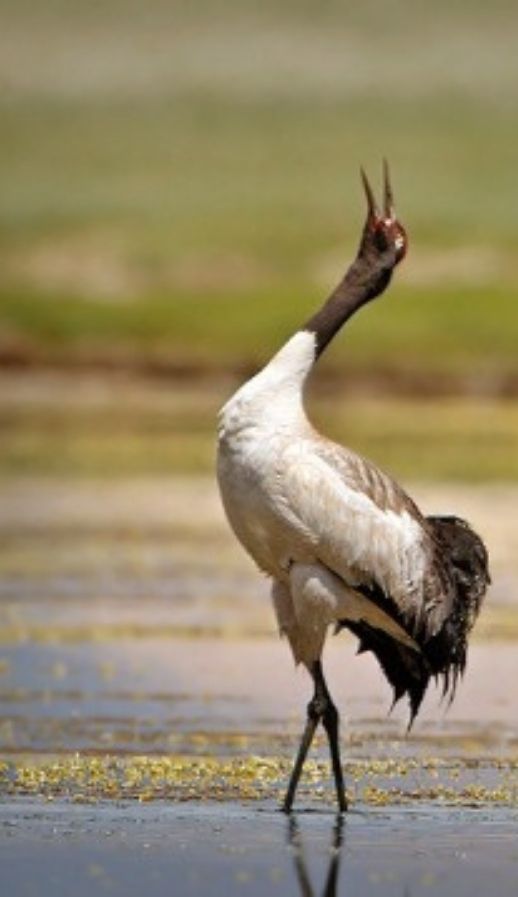
Ladakh
North India, the land of Ladakh, looks as though it was made for birdwatching and photography.

Gir National Park Gujarat
Sometimes it is not just the species spotted but also the amazing moments. Some of our guests had the unique opportunity to witness the mating of Asiatic Lions in the Gir Forest, truly a special moment.

Delhi
Surajpur is an amazing wetland close to the nation’s capital. Apart from being one of the monsoon homes for the Bristled Grassbird, it is also home to another sought-after species: the Bengal Bush Lark.

Rajasthan
One advantage of living near the birding hotspot of Bharatpur is that you can see some amazing birds, like the graceful Sarus Crane, in your backyard during this lockdown


